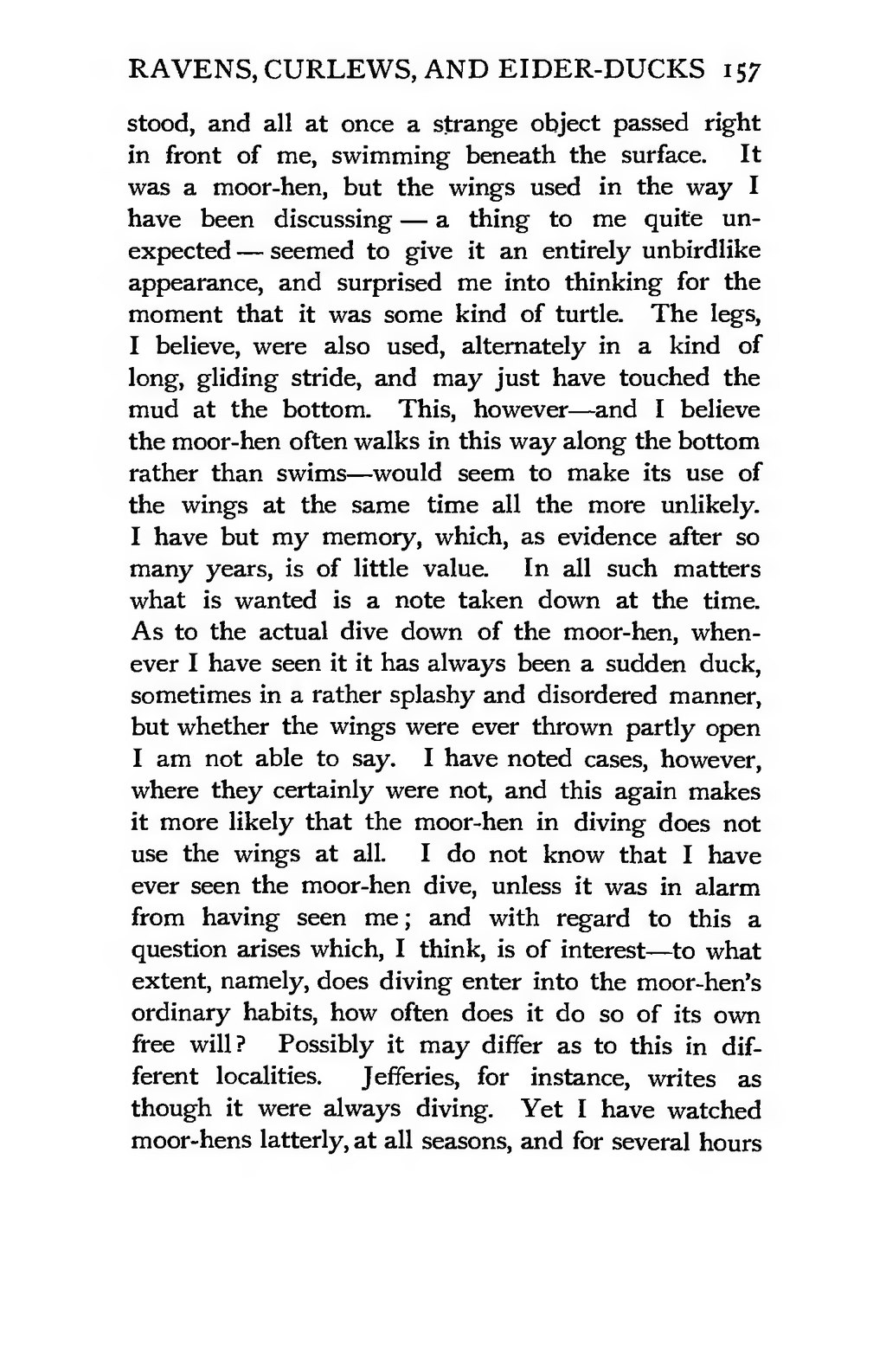stood, and all at once a strange object passed right in front of me, swimming beneath the surface. It was a moor-hen, but the wings used in the way I have been discussing—a thing to me quite unexpected—seemed to give it an entirely unbirdlike appearance, and surprised me into thinking for the moment that it was some kind of turtle. The legs, I believe, were also used, alternately in a kind of long, gliding stride, and may just have touched the mud at the bottom. This, however—and I believe the moor-hen often walks in this way along the bottom rather than swims—would seem to make its use of the wings at the same time all the more unlikely. I have but my memory, which, as evidence after so many years, is of little value. In all such matters what is wanted is a note taken down at the time. As to the actual dive down of the moor-hen, whenever I have seen it it has always been a sudden duck, sometimes in a rather splashy and disordered manner, but whether the wings were ever thrown partly open I am not able to say. I have noted cases, however, where they certainly were not, and this again makes it more likely that the moor-hen in diving does not use the wings at all. I do not know that I have ever seen the moor-hen dive, unless it was in alarm from having seen me; and with regard to this a question arises which, I think, is of interest—to what extent, namely, does diving enter into the moor-hen's ordinary habits, how often does it do so of its own free will? Possibly it may differ as to this in different localities. Jefferies, for instance, writes as though it were always diving. Yet I have watched moor-hens latterly, at all seasons, and for several hours
